The Jamaican Red-tailed Hawk (Buteo jamaicensis) stands as a captivating emblem of Jamaica’s avian diversity.
Endemic to the island, this bird of prey commands attention with its distinctive appearance and remarkable behaviors.
Characterized by a striking rust-red tail and adaptable plumage, the hawk navigates various habitats, from lush forests to coastal landscapes.
Its taxonomical classification places it in the order Accipitriformes, family Accipitridae, and genus Buteo, highlighting its evolutionary lineage within the avian kingdom.
Known for acrobatic courtship displays and collaborative parenting, the Jamaican Red-tailed Hawk plays a vital role in Jamaica’s ecosystems as a top predator.
However, conservation challenges underscore the urgency of preserving its habitats to ensure the continued grace of this remarkable species amidst the rich tapestry of Jamaican wildlife. So, stay sharp.
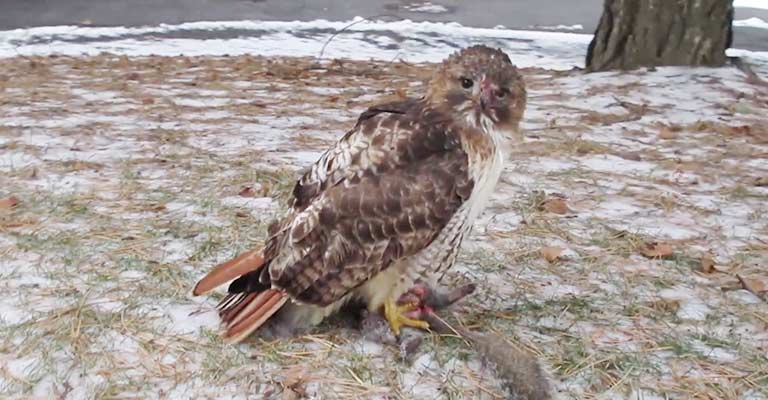
Identifying Characteristics of Jamaican Red-tailed Hawk
The Jamaican Red-tailed Hawk (Buteo jamaicensis) is a distinctive and captivating bird of prey that inhabits the lush landscapes of Jamaica.
Identifying this majestic raptor requires attention to various physical characteristics and behavioral traits. Here are some key points to help distinguish the Jamaican Red-tailed Hawk:
Size and Shape
The Jamaican Red-tailed Hawk is a medium to large-sized bird with a wingspan ranging from 45 to 56 inches.
Its broad wings and relatively short tail are notable features, providing excellent maneuverability during flight. The body is stocky, a characteristic common among hawks.
Coloration
As the name suggests, the red tail is a prominent feature of this hawk. The upper side of the tail feathers displays a distinctive rusty-red hue, while the underparts are typically lighter with streaks of brown.
The rest of the plumage varies but often consists of shades of brown, with a darker brown back and a paler belly.
Head and Facial Features
The head of the Jamaican Red-tailed Hawk is relatively large, and it features a hooked beak suitable for tearing into its prey.
The eyes are keen and typically yellow, providing excellent vision for spotting prey from a distance.
The facial disk, a characteristic found in some other raptors, is not as pronounced in this species.
Flight Pattern
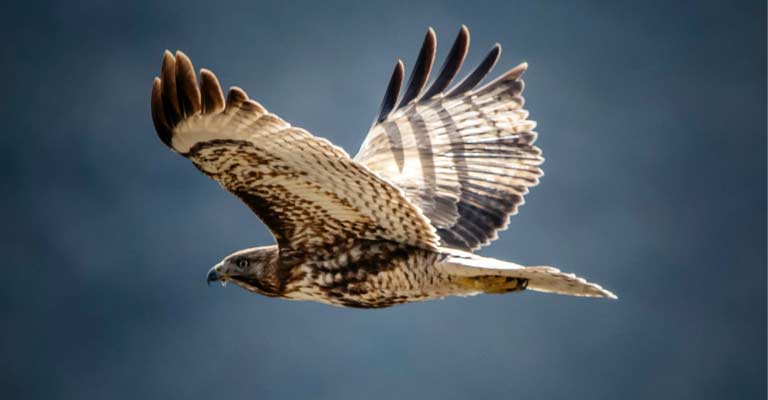
Observing the flight pattern is crucial in identifying the Jamaican Red-tailed Hawk. It soars gracefully in wide circles, often using thermals to gain altitude.
During flight, the broad wings and short tail become evident, and the red tail feathers are especially conspicuous from below.
Habitat and Range
The Jamaican Red-tailed Hawk primarily inhabits a range of habitats, including forests, grasslands, and agricultural areas.
Endemic to Jamaica, this bird of prey has adapted to the diverse ecosystems found on the island, from coastal areas to mountainous regions.
Vocalizations
The hawk’s vocalizations can also aid in identification. It produces a distinctive scream or high-pitched whistle that echoes through its territory.
These calls are often used for communication between mates or to establish territory boundaries.
Behavioral Traits
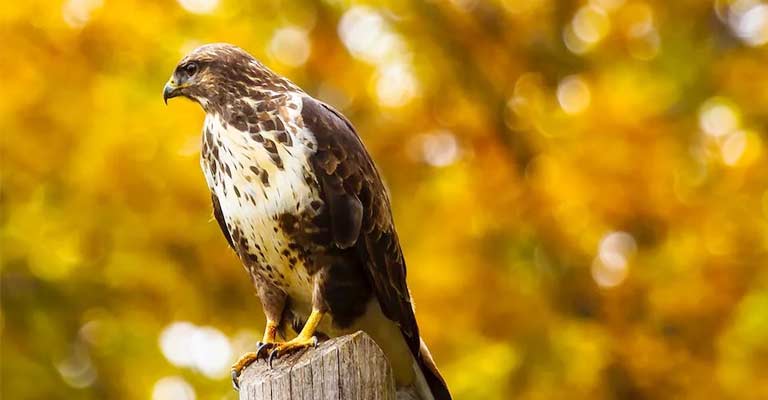
This species is known for its hunting behavior, which typically involves soaring at great heights, and scanning the ground below for potential prey.
The Jamaican Red-tailed Hawk is an opportunistic predator, feeding on a variety of small mammals, birds, and reptiles.
Breeding Characteristics
During the breeding season, the Jamaican Red-tailed Hawk engages in courtship displays that involve aerial acrobatics and vocalizations. Nests are usually built in trees, and the female lays a clutch of eggs.
The young hawks exhibit distinct plumage characteristics, allowing for identification even before they reach maturity.
The Jamaican Red-tailed Hawk is a captivating bird with a combination of physical characteristics, behaviors, and vocalizations that make it distinguishable in its natural habitat.
By paying attention to these key points, birdwatchers and enthusiasts can enhance their ability to identify this unique and magnificent raptor.
Taxonomical Details of Jamaican Red-tailed Hawk
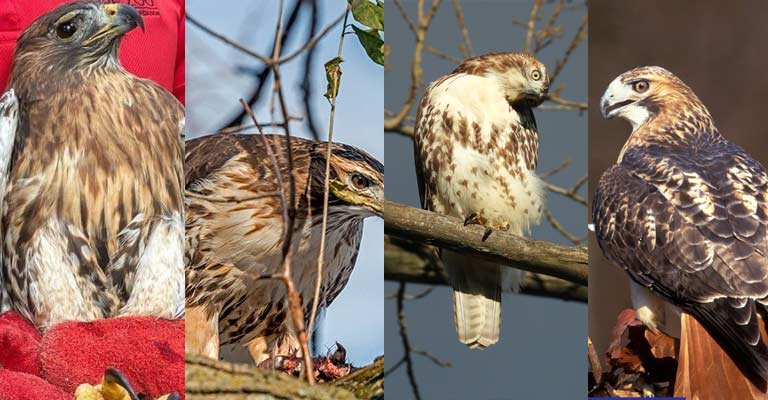
Here is a table summarizing the taxonomical details of the Jamaican Red-tailed Hawk:
| Taxonomical Level | Classification |
| Domain | Eukaryota |
| Kingdom | Animalia |
| Phylum | Chordata |
| Class | Aves |
| Order | Accipitriformes |
| Family | Accipitridae |
| Genus | Buteo |
| Species | B. jamaicensis |
| Subspecies | B. j. jamaicensis |
These taxonomical details provide a hierarchical classification of the Jamaican Red-tailed Hawk, from its broader domain to its specific subspecies.
Understanding the bird’s taxonomic position contributes to our knowledge of its evolutionary relationships and place within the broader avian diversity.
The Jamaican Red-tailed Hawk (Buteo jamaicensis) belongs to the domain Eukaryota, kingdom Animalia, phylum Chordata, and class Aves. It is classified under the order Accipitriformes, family Accipitridae, and genus Buteo.
The specific epithet is “jamaicensis,” highlighting its exclusive presence in Jamaica. Additionally, the bird has a subspecies, B. j. jamaicensis.
This taxonomical classification underscores the bird’s place in the diverse world of avian species, providing insights into its evolutionary relationships and biological characteristics within the broader framework of the animal kingdom.
Jamaican Red-tailed Hawk Life History
The life history of the Jamaican Red-tailed Hawk (Buteo jamaicensis) is a fascinating journey shaped by its adaptation to the diverse ecosystems of Jamaica.
From its feeding habits to nesting behaviors and conservation challenges, the life of this bird offers valuable insights into the delicate balance between species and their environment.
Food
The Jamaican Red-tailed Hawk is a carnivorous bird of prey with a diverse diet. Its primary food sources include small mammals like rodents, birds, and reptiles.
The hawk’s keen eyesight enables it to spot potential prey from great distances, and its powerful talons and beak allow for effective capture and consumption.
The adaptability of its diet reflects the bird’s ability to thrive in various habitats, from forests to agricultural landscapes.
Habitat
This species showcases remarkable adaptability to different habitats, making it a versatile resident of Jamaica. The Jamaican Red-tailed Hawk can be found in forests, grasslands, and coastal areas.
Its ability to navigate and establish territories in a range of environments is a testament to its resilience and resourcefulness.
Range Map
The range map of the Jamaican Red-tailed Hawk illustrates its exclusive presence on the island of Jamaica.
With a distribution spanning from the coastal areas to the mountainous regions, the hawk has carved out niches in diverse landscapes.
The map serves as a valuable tool for researchers and conservationists to monitor and protect the bird’s habitats.
Nesting
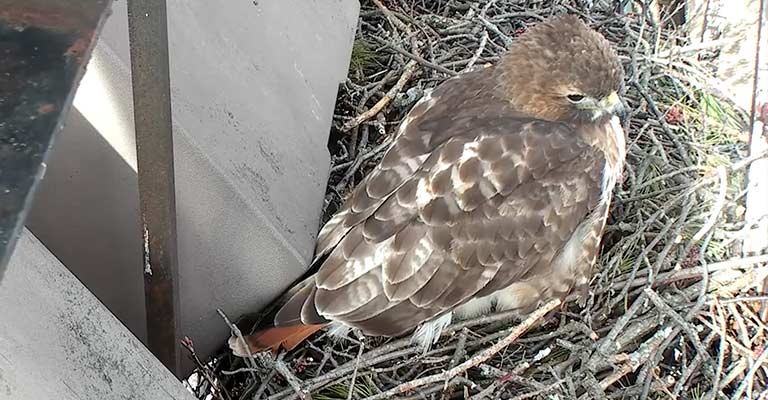
During the breeding season, typically from late winter to early spring, the Jamaican Red-tailed Hawk engages in courtship displays.
The pair collaboratively builds a nest, usually located in trees at moderate heights. Nests are constructed from sticks and lined with softer materials.
The female lays a clutch of eggs, and both parents share the responsibilities of incubation and caring for the young.
Here is a table summarizing the nesting details of the Jamaican Red-tailed Hawk:
| Nesting Details | Facts |
| Clutch Size | 2 to 3 eggs |
| Number of Broods | Typically one per breeding season |
| Egg Length | Approximately 2.5 to 3 inches (6.35 to 7.62 cm) |
| Egg Width | Approximately 1.8 to 2 inches (4.57 to 5.08 cm) |
| Incubation Period | Around 28 to 32 days |
| Nestling Period | Approximately 42 to 46 days |
| Egg Description | Pale bluish-white with occasional light brown markings |
| Nest Building | Constructed with sticks, lined with softer materials such as leaves or bark |
| Nesting Habitat | Trees, often at moderate heights |
| Parental Involvement | Both parents share incubation and feeding responsibilities |
| Fledgling Appearance | Initially covered in down feathers, gradually developing adult plumage |
These nesting details provide insights into the reproductive biology and parenting behavior of the Jamaican Red-tailed Hawk, showcasing the intricate processes involved in the species’ breeding cycle.
Breeding
Breeding is a crucial aspect of the Jamaican Red-tailed Hawk’s life history. Courtship displays involve aerial acrobatics, vocalizations, and mutual preening, reinforcing the bond between mates.
The female usually lays 2 to 3 eggs, and the incubation period lasts about a month. The fledglings remain dependent on their parents for several weeks after hatching before gradually gaining independence.
Diseases
While the Jamaican Red-tailed Hawk does not face specific endemic diseases, it is susceptible to general avian health issues.
Common challenges include parasitic infections, injuries from prey or territorial disputes, and exposure to environmental toxins. Monitoring the bird’s health is crucial for its long-term survival.
Treatment
Veterinary intervention may be necessary for injured or sick Jamaican Red-tailed Hawks.
Rehabilitation centers play a vital role in providing medical care, rehabilitation, and, when possible, releasing the birds back into the wild.
Conservation efforts often include educational programs to raise awareness about the importance of protecting these raptors and their habitats.
Conservation
Conservation initiatives are essential to safeguard the Jamaican Red-tailed Hawk and its habitat. Deforestation, habitat degradation, and human activities pose threats to the species.
Conservation efforts focus on habitat preservation, sustainable land management, and public awareness campaigns to promote coexistence between these magnificent birds and human communities.
The life history of the Jamaican Red-tailed Hawk unveils a story of adaptability, resilience, and the delicate balance between the species and its environment.
Understanding and actively participating in the conservation of this iconic bird are vital for ensuring its continued presence in the rich tapestry of Jamaica’s biodiversity.
10 Amazing Facts About Jamaican Red-tailed Hawk
The Jamaican Red-tailed Hawk (Buteo jamaicensis) is a captivating bird of prey that graces the skies of Jamaica, exhibiting remarkable features and behaviors. Here are 10 amazing facts about this majestic raptor:
- Endemic Elegance: The Jamaican Red-tailed Hawk is exclusive to Jamaica, making it an endemic species found nowhere else in the world. Its localized presence adds to the unique biodiversity of the island.
- Striking Plumage: Renowned for its distinctive red tail, this hawk boasts a captivating plumage. The upperparts are often shades of brown, complementing the rusty-red tail feathers that become particularly prominent during flight.
- Versatile Habitat: Unlike some birds of prey with specific habitat preferences, the Jamaican Red-tailed Hawk showcases versatility. It can be found in diverse environments ranging from forests and grasslands to coastal regions.
- Acrobatic Courtship Displays: During the breeding season, these hawks engage in breathtaking courtship displays. Aerial acrobatics, vocalizations, and mutual preening are integral parts of their courtship rituals, showcasing the birds’ agility and bond.
- Adaptable Diet: Known for their opportunistic feeding habits, Jamaican Red-tailed Hawks have a varied diet that includes small mammals, birds, and reptiles. This adaptability contributes to their ability to thrive in different ecosystems.
- Parental Collaboration: Parental duties are a shared responsibility. Both the male and female actively participate in nest building, incubation, and feeding of the offspring. This collaborative approach enhances the chances of reproductive success.
- Distinctive Vocalizations: The Jamaican Red-tailed Hawk communicates through a series of distinctive vocalizations. Its high-pitched screams and whistles echo through the landscape, serving as territorial markers and communication between mates.
- Breeding Nests in Trees: Nests are constructed in trees at moderate heights. Comprising sticks and lined with softer materials like leaves or bark, these nests provide a secure environment for the eggs and subsequent offspring.
- Conservation Concerns: Despite its adaptability, the Jamaican Red-tailed Hawk faces conservation challenges. Habitat loss, deforestation, and human activities threaten its existence, emphasizing the need for conservation efforts to preserve this iconic bird.
- Role in Ecosystem Balance: As a top predator, the Jamaican Red-tailed Hawk plays a crucial role in maintaining the ecological balance of its habitat. Controlling populations of small mammals and birds, it contributes to the overall health and stability of the ecosystem.
The Jamaican Red-tailed Hawk stands as a symbol of Jamaica’s biodiversity, showcasing adaptability, elegance, and the intricate interconnectedness of species within its habitat.
Wrapping Up
The Jamaican Red-tailed Hawk, with its exclusive presence on the island, embodies the delicate harmony between wildlife and ecosystems.
Its adaptability, striking plumage, and collaborative parenting underscore the importance of preserving both the species and its diverse habitats.
Conservation efforts are imperative to safeguard this iconic bird and maintain the ecological balance it contributes to. Thank you so much.